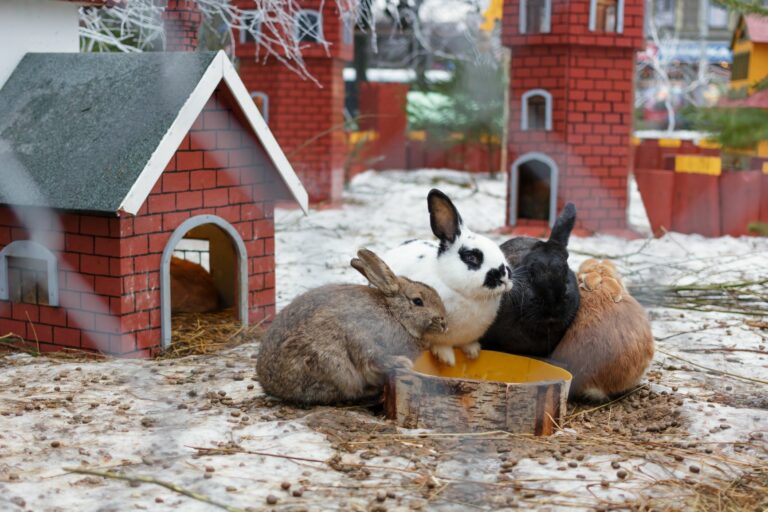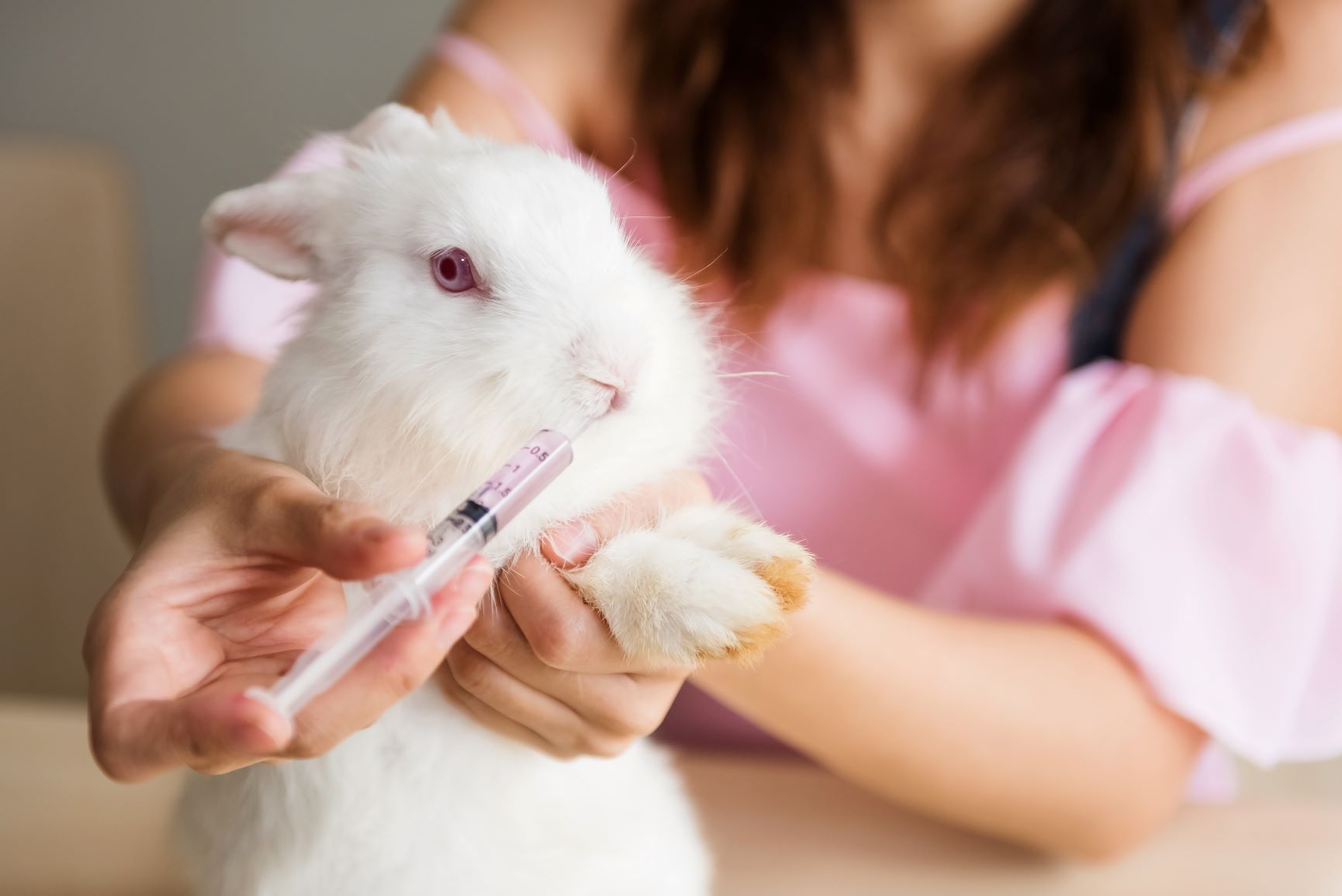The Digestive System of Hamsters
This guide applies to golden Syrian hamsters and dwarf hamsters. Despite being different species, these pet rodents are similar in their internal makeup and their nutritional needs.
Rabbit faeces can be easily recognised by their typical round shape. If your rabbit's faeces suddenly become more fluid or turn from dark brown to red in colour, it has diarrhoea. Since diarrhoea in rabbits can lead to serious consequences, you should know when you have to go to the vet.

© Victor Koldunov / stock.adobe.com
Rabbit faeces should be round, solid and slightly moist.
Diarrhoea in rabbits can generally be treated well. However, if your rabbit has lost too much water and salt, it may go into a life-threatening state of shock. In this case, it is important to get your rabbit examined and treated by a vet straight away.
The clinical manifestation of diarrhoea in rabbits only differs slightly from that in humans. Some of the most common signs include:
Diarrhoea leads to water and electrolytes like sodium being lost. This upsets the electrolyte balance. If diarrhoea is particularly severe in rabbits or lasts a long time (chronic), your rabbit’s circulatory condition may worsen drastically.
If your rabbit shows the following signs of shock with diarrhoea, you should get it treated by a vet as quickly as possible:
The vet needs faecal samples so that they can determine the cause of your rabbit’s diarrhoea as quickly as possible. Hence, collect several traces of excrement if possible and take them with you to the first appointment. The vet can then examine the faecal samples for bacteria, yeasts and parasites.
If your rabbit only has mild diarrhoea, it doesn’t usually need any extensive treatment. The most important thing is that your rabbit balances its water intake. You can use a syringe filled with water to encourage your rabbit to drink.
In order to continue to strengthen your rabbit when it is suffering from diarrhoea, the vet can prescribe vitamins, electrolytes and medication for improved gut flora. If the faecal examination allowed the vet to identify that your rabbit’s diarrhoea was triggered by an infection, your pet needs antibiotics or a deworming treatment.
Caution: Be sure to clean the faeces-soiled hutch and your rabbit’s fur, because flies love to lay their eggs in rabbit faeces. Within a short period of time, fly maggots hatch and in the worst case bite through your rabbit’s skin.
 © Blanscape / stock.adobe.com
© Blanscape / stock.adobe.com
If your rabbit is already unconscious or can no longer stand on its own legs, it needs immediate emergency treatment. In this case, the vet injects fluids and electrolytes straight into your rabbit’s veins or beneath its skin by infusion to reduce the loss of fluids.
There are many causes that can lead to diarrhoea in your rabbit. However, some only result in diarrhoea if the immune system is debilitated by stress or other underlying diseases.
The following table splits the triggers of diarrhoea into infectious and non-infectious causes:
(threadworms, coccidia, giardia)
Infectious causes
Non-infectious causes
Intestinal parasites Food intolerances, changing food too quickly, consuming indigestible objects (e.g. straw or plastic parts) or heavily fermented food with a high proportion of sugar. Viral diseases (coronaviruses, rotaviruses) Consuming herbal toxins (e.g. oleander) or medications Bacterial intestinal infections Stress caused by new additions or too much noise Yeast Dental problems
Diarrhoea mostly occurs in rabbits if they have eaten the wrong or off food. Although rabbits like to eat fresh fruit and vegetables, they may not have too much of them.
The reason is that they are unable to tolerate sugar and starch well. Hence, offer more hay and high-quality green fodder to present diarrhoea in your rabbit. Along with a balanced diet, always make sure that your rabbit has free access to fresh drinking water at all times.
In order to reduce the risk of infectious diseases, you should make sure the hutch is kept clean. Regularly change the straw and clean the hutch with disinfectants or hot water. New arrivals should be quarantined at first.
This guide applies to golden Syrian hamsters and dwarf hamsters. Despite being different species, these pet rodents are similar in their internal makeup and their nutritional needs.
The guinea pig digestion is very complex. Disorders of digestion are usually caused by errors in feeding for these rodents. Find out about all the different stages of the Guinea Pig anatomy that play a role in the digestion process.
A healthy guinea pig will take care of its health and beauty regimen itself by and large. It will use its claws to remove dirt and dust from its fur and use its tongue to lick itself clean.